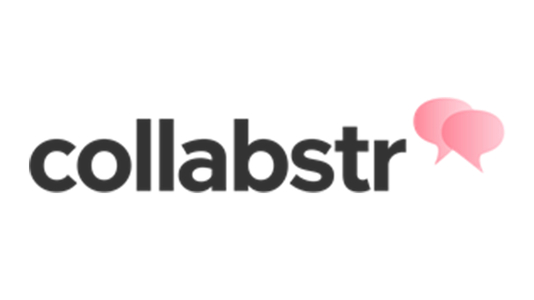

CLAYTON RANNARD
Co-founder
Collabstr
Clayton Rannard is Co-founder of Collabstr, a marketplace connecting brands and creators. Brands can use it to find creators based on a social platform, niche, and follower count. Rannard is an entrepreneur and engineer experienced in creating software for the influencer industry.
He has a Degree in Computer Science from British Columbia Institute of Technology and several tech startups in his founder portfolio. Collabstr is a marketplace connecting brands and creators. Brands can use it to find creators based on a social platform, niche, and follower count.
While there was a decline in social media engagement rates between 2019 and 2022, the influence of influencer marketing continues to increase, says Clayton Rannard, Co-founder, Collabstr. Influencers serve as an unconventional marketing avenue, enabling companies to connect with their audience through a third-party persona. Unlike traditional marketing methods, influencers boast a specialized following that assists brands in reaching a demographic that might otherwise be challenging to access. The growing reliance on influencers is evident in the insights gleaned from the latest 2024 Influencer Marketing Report.
Drawing on a dataset encompassing over 110,000 brands and influencers, the report provides a nuanced perspective on the future landscape of influencer marketing. Although the surface data suggests a burgeoning creator economy anticipated to expand by $398.74 billion over seven years, the outlook for individual influencers presents a somewhat unexpected scenario.
The Implications for Influencers Amid Market Growth
The concept of market saturation looms large for emerging influencers, a factor that is poised to become increasingly significant as the market expands. According to findings from Collabstr’s report, the cost of paid collaborations experienced a decline of 16.8% since 2022, with the average expenditure per collaboration hovering around $214. This trend contrasts with the upward trajectory of influencer rates, which surged by as much as 15.17% across platforms such as Instagram, YouTube, and TikTok.
As the influx of influencers into the market intensifies, competition for lucrative collaborations with brands that resonate with their audience escalates. The phenomenon of oversaturation is likely to exert downward pressure on rates, consequently diminishing the value associated with being an influencer. With a burgeoning population of creators, a continued decrease in prices, particularly within oversaturated niches, appears inevitable. While broad influencer categories like 'lifestyle' and 'fashion' become increasingly crowded and competitive, there remains untapped potential within specialized niches. For instance, an influencer focusing specifically on sustainable fashion can still command premium rates owing to their niche audience. This heightened competition is expected to drive individuals towards carving out more specialized niches.
Prevalent Platforms for Influencer Marketing
Influencers vie for prominence across an array of active social networking platforms, including X, Facebook, Instagram, TikTok, and YouTube. Among these platforms, Instagram and TikTok emerge as key battlegrounds for influencer marketing, although two platforms stand out as dominant players in the industry.
Accounting for approximately 42% of paid collaborations, Instagram and TikTok represent the primary domains where influencers converge. Among 80,000 influencers surveyed, 49% indicate a preference for offering services exclusively on Instagram. In contrast, TikTok lags behind at 24%, despite maintaining a comparable volume of paid collaborations throughout the year.
Contrary to expectations based on the previous year's projections, TikTok has yet to surpass Instagram as the preferred platform for influencer marketing. One area where Instagram outshines TikTok is its versatility in content creation. While TikTok primarily revolves around short-form videos competing for virality and placement on the For You page, Instagram offers influencers the option of crafting polished, narrative-driven content.
Surprisingly, YouTube trails behind both platforms, commanding a mere 2% share of paid collaborations. Unlike TikTok and Instagram, YouTube revolves around longer-form content, necessitating the integration of collaborations into existing or new, thematically related content. Consequently, collaborations on YouTube demand meticulous planning and entail a higher level of effort, translating to increased costs for companies.
According to the report, YouTube influencers command a rate that is more than double that of their Instagram counterparts, with collaborations on YouTube averaging around $816, compared to $418 for Instagram. TikTok falls closer to Instagram's pricing, with an average collaboration cost of $520.
The Role of User-Generated Content
While brand collaborations typically dominate the influencer market, user-generated content (UGC) occupies a niche within the creator economy. With a projected growth trajectory exceeding $65 billion over the next decade, UGC has the potential to emerge as a silent leader within the market, especially considering that half of all surveyed creators offer UGC services for sale.
Unlike traditional brand collaborations, UGC affords influencers the freedom to create content that transcends corporate mandates and brand guidelines. Posts such as reviews and unboxings possess a natural authenticity that resonates with audiences, diverging from the more scripted nature of brand-generated content.
A Nielsen Global survey underscores the trustworthiness of UGC, with 92% of consumers expressing a preference for UGC over conventional advertising. However, influencers tend to earn less from UGC collaborations, with the average price for UGC standing at $356 in 2023, representing a modest decrease from the previous year and the lowest pricing across all platforms.
The Implications for Influencer Marketing
The report delineates two key implications for the future of influencer marketing. Firstly, companies can anticipate a proliferation of influencers as the year unfolds, translating into a wider pool of options for collaborative endeavors and, consequently, a downward pressure on rates across the board.
Secondly, influencers must prepare to exert greater effort per collaboration to maintain competitiveness in an increasingly crowded market. This trend is expected to drive influencers towards cultivating more specialized niches for themselves, eschewing generic influencer personas in favor of more targeted audience engagement.
Instagram and TikTok are poised to maintain their status as the primary platforms for influencer marketing, with Instagram likely retaining its lead position due to its capacity for producing polished, meticulously planned content. While outliers like YouTube Shorts remain popular, collaborations are expected to remain prevalent on TikTok and Instagram.
